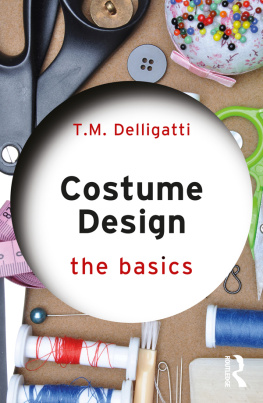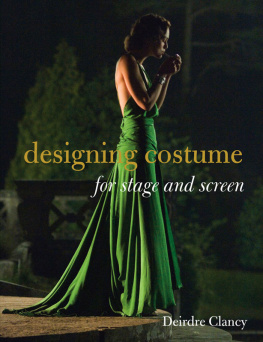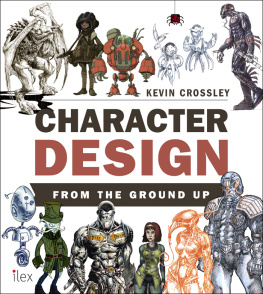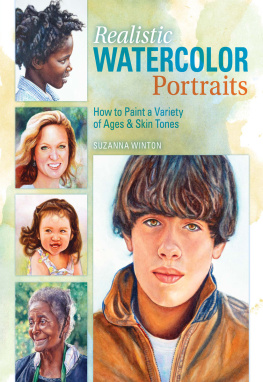Character Sketch
Character Sketch outlines a theory of costume rendering that explores how a designer conceptualizes and creates a character on the page. Beginning with how to develop a sense of character through active, gestural poses, this book explores and explains the process of drawing and painting from rough sketch to finished rendering.
Helen Q. Huang , an award-winning costume designer for more than 25 years, breaks down her process, from understanding body proportions and active poses to applying research and color concepts to renderings. Her step-by-step watercolor painting techniques cover mixing skin tones, blending colors, and applying paint in different methods for a variety of fabric textures and patterns.
Showcasing how to capture a character on the page, Character Sketch is a must-read for any costume designer looking to communicate their artistic vision.
Helen Q. Huang has designed costumes for theaters throughout the United States and abroad. The recipient of both the Helen Hayes Award for Outstanding Costume Design and the Ivey Awards, she is also a professor of the MFA Costume Design Program in the School of Theatre, Dance, and Performance Studies at the University of Maryland, College Park.

Helens design work has been exhibited as part of Costume at the Turn of the Century at the A.A. Bakhrushin Museum in Moscow; in the exhibition Curtain Call: Celebrating a Century of Women Designing for Live Performance at the New York Public Library and Lincoln Center; and the Prague Quadrennial. She has designed internationally for the China National Opera House, and China Central Television. Nationally she has designed for Oregon Shakespeare Festival, The Guthrie Theater, George Street Playhouse, The Classic Stage Company New York, Milwaukee Repertory Theater, The Childrens Theatre Company of Minneapolis, Syracuse Stage, Seattle Repertory Theatre, Utah Shakespeare Festival, The Wilma Theater, Philadelphia Theatre Company, Playmakers Repertory Theatre, The Arden Theatre, Disney Creative Entertainment, and Boston Lyric Opera. Her designs in the Washington, D.C. region have included work for The Washington Ballet, Woolly Mammoth Theatre Company, Studio Theatre, Folger Theatre, Fords Theatre, Round House Theatre, Signature Theatre, Arena Stage, Shakespeare Theatre Company, and Olney Theatre.
Character Sketch
A Drawing Course
for Costume Designers
Helen Q. Huang

First published 2018
by Routledge
711 Third Avenue, New York, NY 10017
and by Routledge
2 Park Square, Milton Park, Abingdon, Oxon, OX14 4RN
Routledge is an imprint of the Taylor & Francis Group, an informa business
2018 Taylor & Francis
The right of Helen Q. Huang to be identified as author of this work has been asserted by her in accordance with sections 77 and 78 of the Copyright, Designs and Patents Act 1988.
All rights reserved. No part of this book may be reprinted or reproduced or utilised in any form or by any electronic, mechanical, or other means, now known or hereafter invented, including photocopying and recording, or in any information storage or retrieval system, without permission in writing from the publishers.
Trademark notice: Product or corporate names may be trademarks or registered trademarks, and are used only for identification and explanation without intent to infringe.
Library of Congress Cataloging-in-Publication Data
A catalog record for this book has been requested
ISBN: 978-1-138-89196-8 (hbk)
ISBN: 978-1-138-89195-1 (pbk)
ISBN: 978-1-315-70941-3 (ebk)
Typeset in Gill Sans
by Florence Production Ltd, Stoodleigh, Devon, UK
To my parents
and
To
Li Qiang
CONTENTS
I first and foremost want to dedicate this book to Ming Cho Lee, who has inspired and supported me at many stages in my career in ways both small and large. The critique that Ming gave me when we met in the mid-1990s on how to draw an imperfect body for the perfect character completely changed my way of approaching costume rendering and the way I approach teaching. For that and many other moments along the way, thank you.
To costume designer Kelsey Hunt, my co-author both here and on Elizabethan Costume Design and Construction, for helping me to expand on ideas in that book in the pages you see here.
To costume designer Heather C. Jackson, for her deep understanding of my methods and her ability to help me translate my work in the classroom to the page for new students and designers.
Costume rendering is not the final step in a design process; it is not exclusively a means of communication. Rather, I believe, rendering is an essential tool throughout the full process of design. It is the means by which I search, build, and shape a character. In my design philosophy, the act of rendering is the act of design.
This search for character continues even off the page. Over the course of my career I have had the good fortune to work with a number of incredible artists that have shaped my understanding of art, theater, and design. Directors Tim Bond, Joy Zinoman, and Peter Brosius have been particularly influential collaborators. Each of them has been relentless in their search for character throughout the design process, refusing to let go until they wholeheartedly believe in the person I have presented on paper. I have adopted this fierce and relentless approach to the search for character in all of my work, and I bring this same perspective to my students at the University of Maryland. My students know that it is not enough to simply render well, that success in costume design means capturing the essence of character on the page.
However, I realize that the search for character can often be hampered by a lack of fundamental skills and techniques. With this book I hope to provide young designers with a guide to developing those foundational skills, from drawing a dynamic human body in motion to creating layered and textured clothing through paint. Proficiency in rendering is developed through hours upon hours of practice, and I encourage any young artist seeking to develop their rendering ability to commit themselves to a routine of daily sketching. This text can be a helpful guide in developing and deepening that routine. It is my sincere belief that dedicated rendering practice utilizing this text can provide a young designer with the skills and insight necessary to open themselves up to a greater exploration of character.
CHAPTER 1
CREATING THE SKETCH
One common way to understand the proportions of the body is to map out key points in the figure using the length of the head as a unit of measure. By comparing the length of the head to other distances on the body we begin to train our eye to see the proportions of the figure. The height of the head then becomes a ruler by which we can begin to understand and compare the rest of the vertical measures in a body.
Many figure drawing texts declare that the human figure is typically 8 heads tall. In my experience, this results in a long and idealized figure appropriate to fashion illustration. I prefer to utilize a more realistic sense of proportion and work with a figure that is 7 heads of vertical space.

![Helen Q. Huang [黄其智] Character Sketch: A Drawing Course for Costume Designers](/uploads/posts/book/307621/thumbs/helen-q-huang-character-sketch-a.jpg)









